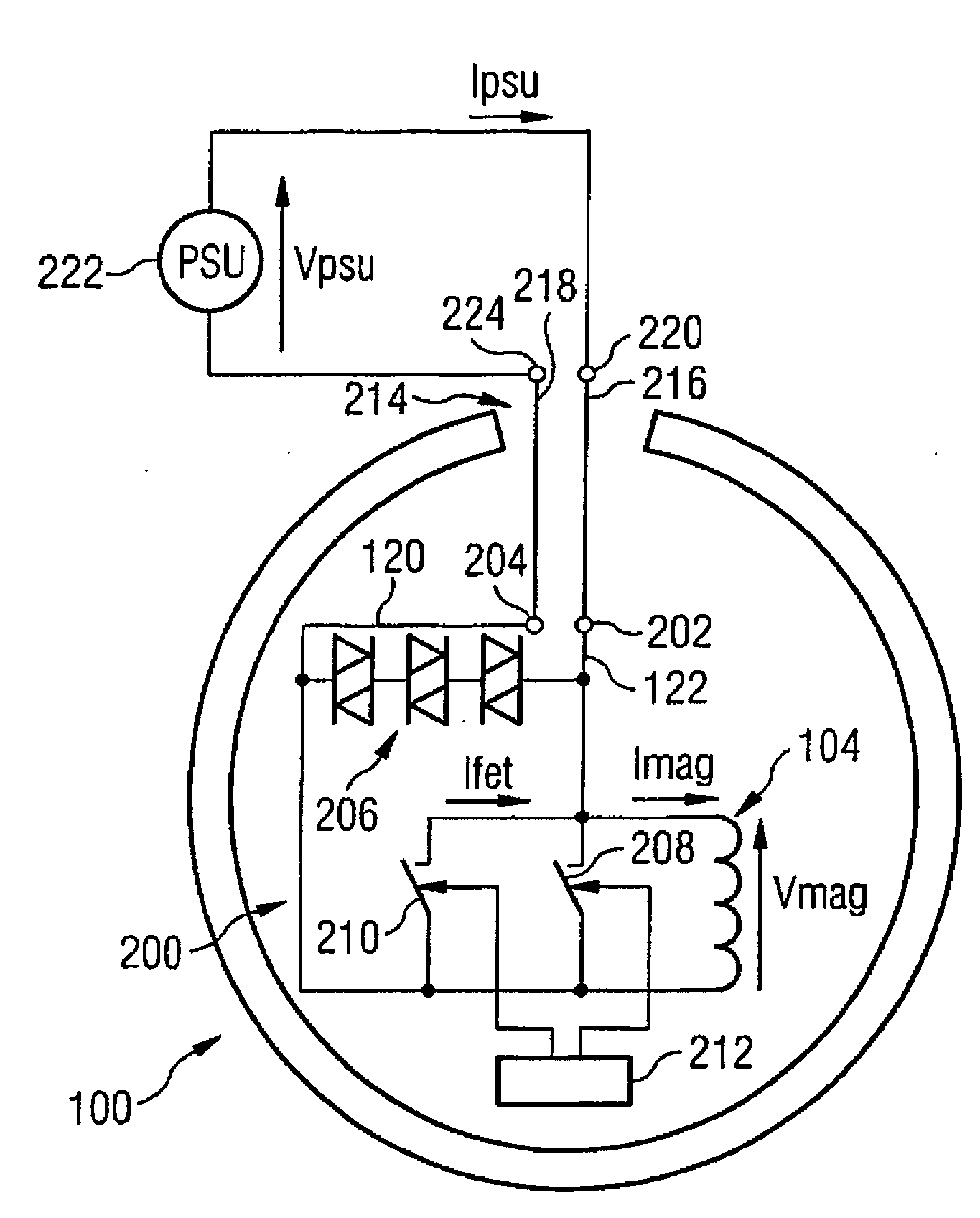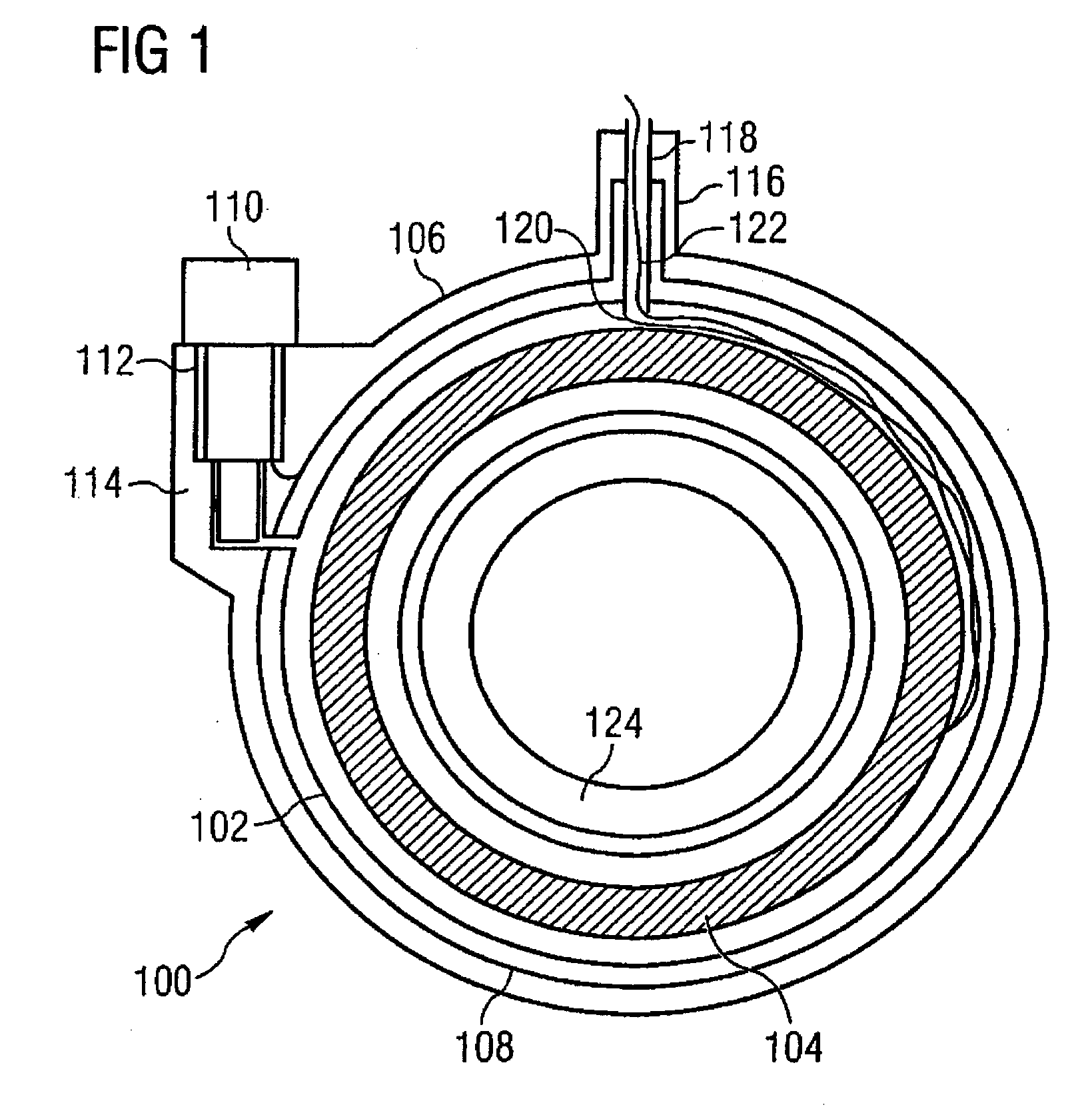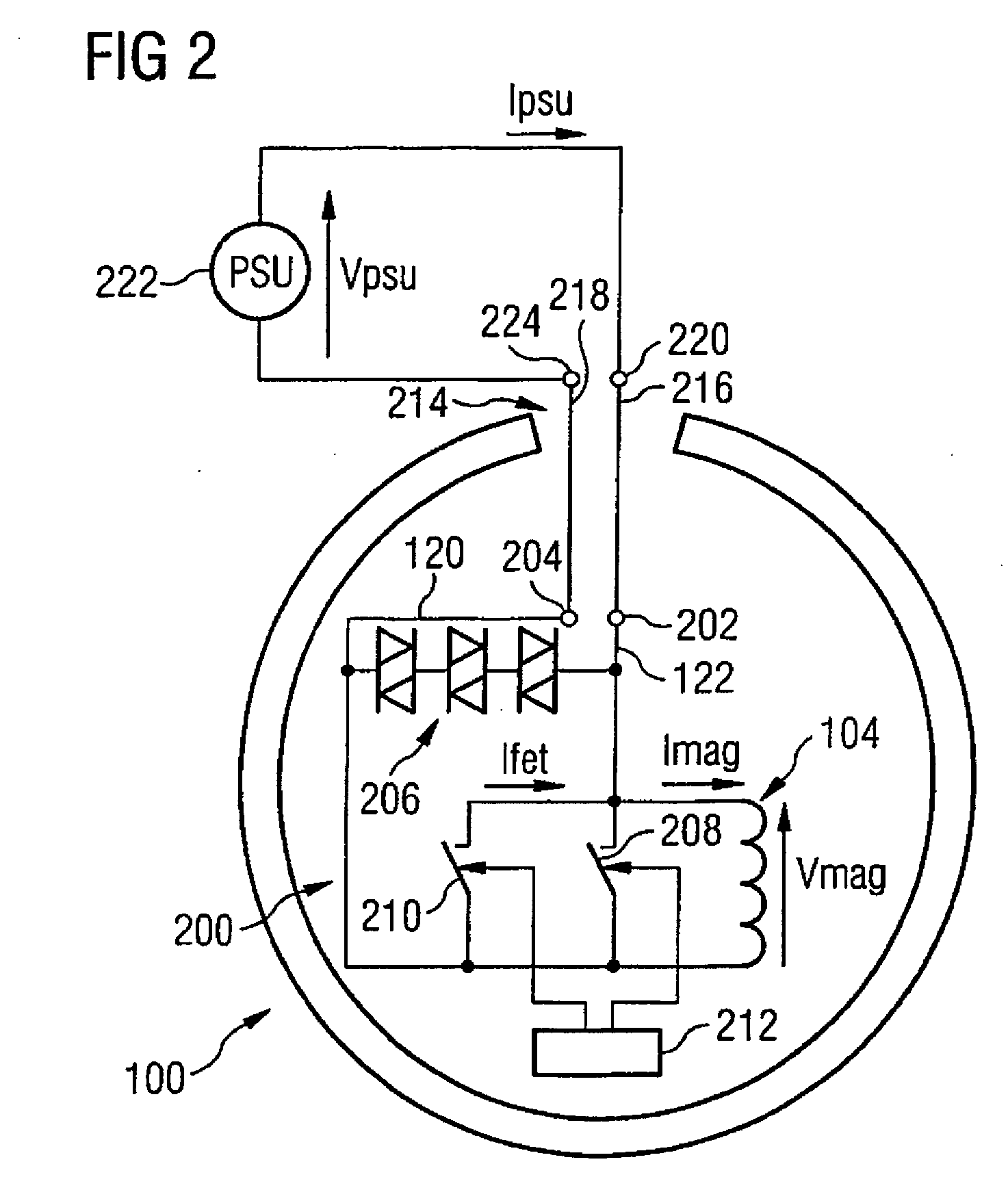Coil energization apparatus and method of energizing a superconductive coil
a superconducting coil and energizing technology, which is applied in the direction of superconducting magnets/coils, using reradiation, magnetic materials, etc., can solve the problems of limiting the maximum current, limiting the design of superconducting magnets, and undesirable reliance on the number of turns of superconducting wires, etc., to achieve the effect of improving the energizing efficiency
- Summary
- Abstract
- Description
- Claims
- Application Information
AI Technical Summary
Benefits of technology
Problems solved by technology
Method used
Image
Examples
Embodiment Construction
[0019]Throughout the following description identical reference numerals will be used to identify like parts.
[0020]Referring to FIG. 1, a tomography system, for example a Magnetic Resonance Imaging (MRI) system, comprises a superconductive magnet unit 100 having a cryostat including a cryogen vessel 102. A cooled superconductive magnet 104 is provided within the cryogen vessel 102, the cryogen vessel 102 being retained within an Outer Vacuum Chamber (OVC) 106. One or more thermal radiation shields 108 are provided in a vacuum space between the cryogen vessel 102 and the OVC 106. In this example, a refrigerator 110 is mounted in a refrigerator sock 112 located in a turret 114 towards the side of the cryostat, the refrigerator 110 being provided for the purpose of maintaining the temperature of a cryogen provided in the cryogen vessel 102. An access turret 116 is provided at the top of the cryostat, the access turret 116 retaining a vent tube 118 that serves as an access neck. The refr...
PUM
 Login to View More
Login to View More Abstract
Description
Claims
Application Information
 Login to View More
Login to View More - R&D
- Intellectual Property
- Life Sciences
- Materials
- Tech Scout
- Unparalleled Data Quality
- Higher Quality Content
- 60% Fewer Hallucinations
Browse by: Latest US Patents, China's latest patents, Technical Efficacy Thesaurus, Application Domain, Technology Topic, Popular Technical Reports.
© 2025 PatSnap. All rights reserved.Legal|Privacy policy|Modern Slavery Act Transparency Statement|Sitemap|About US| Contact US: help@patsnap.com



